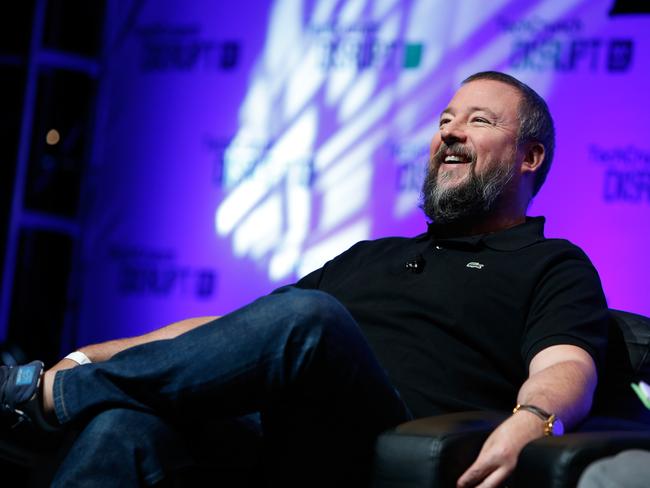Vice Media ‘bad boy’ strategy pays off handsomely
IT WAS the ‘bad boy’ upstart of media, appealing to a cashed-up crowd that continues to elude the big guys. Now the business is worth $2.67 billion.

THE bad boy of digital media is now the king of the hill.
Vice Media, the Brooklyn-based online news operation which has a strong following among 18- to 34-year-olds, has secured $534 million ($US500 million) in funding at a valuation of $2.67 billion, according to reports in the New York Times and TechCrunch.
The latest investment will allow Vice to invest in new technology and to beef up its coverage capabilities in news, including in video, around the world.
At $2.67 billion, Vice’s value is greater than that of the “grey lady” of the industry, the New York Times, and many other established media organisations.
The reports said the funds include $267 million each from Technology Crossover Ventures, a Silicon Valley investment firm, and the television network A&E, with each getting a 10 per cent stake.
While many in mainstream media know little about Vice, its unusual rise has not surprised analysts who follow digital sector.
“Vice has done one of the hardest things to do in media today which is to reach the young demographic, the cord cutters, the non-newspaper readers,” says Rebecca Lieb, an analyst following digital media for Altimeter Group.
SEX, DRUGS AND ROCK ‘N’ ROLL
Importantly, Lieb said, Vice has been able to gain a following among young men, who are noticeably absent on mainstream media.

“Vice has made its mark by being subversive. They use sex, drugs rock ‘n’ roll and violence,” Lieb told AFP. “They are providing the content these consumers want.” Vice describes itself as “a global media brand producing and distributing premium digital media across platforms for 18-34 year olds.” It was founded in Canada as a print magazine by Suroosh Alvi, described in some reports as a recovering heroin addict, and Shane Smith, whose numerous tattoos give him the look of a biker gang member.
It claims 220 million unique visitors and 500 million video views per month, and has 4,000 employees in 35 offices worldwide. It also has partnerships with YouTube, Facebook and Twitter.
Vice gained notoriety for sending former NBA star Dennis Rodman to North Korea last year. It also won praise for a five-part documentary on the inner workings of IS, the militant Islamist group in the Middle East.
Vice operates a popular YouTube channel and also produces news programming for Time Warner’s HBO.
Ken Doctor, analyst with the media research firm Outsell, said Vice has take a page from the playbook of sports media group ESPN, focusing heavily on a particular demographic group.
“Its attractiveness and increasing valuation are driven by its highly diversified business model, which is being proven out on ramping revenue.” Doctor added that Vice has been innovative in creating its own in-house digital advertising agency and by developing a modern studio for content sold to HBO and European television.

Vice is believed to be moving to annual revenues of $534 million based on that, “its valuation seems justifiable,” Doctor said.
SHIFT TO DIGITAL-ONLY
Vice is perhaps the most prominent of the digital-only news outlets which have been emerging in recent years, along with groups like the Huffington Post, and BuzzFeed, which last month raised $53.4 million at a valuation of $909 million.
According to a Pew Research Center study released in March, online news ventures have added nearly 5,000 US media jobs in the past few years, while most traditional news organisations have struggled.
Amy Mitchell, director of journalism research for Pew, said operations like Vice and BuzzFeed have grown “by marrying technology expertise and journalistic expertise in a way that hasn’t happened before.” And she noted that the digital outlets “are thinking about news and information in an international way,” which broadens But Mitchell said digital-only news outlets are still a relatively small slice of the US media landscape, with the newspaper sector still employing some 38,000 people even after years of deep cuts.
While the trajectory is moving in favour of digital, Mitchel said it’s yet clear if these operations can be profitable, since most of the money is coming from capital investments.
“There’s no clear evidence at this point of a new kind of revenue model to support these news operations purely from the news they are producing,” she said.



